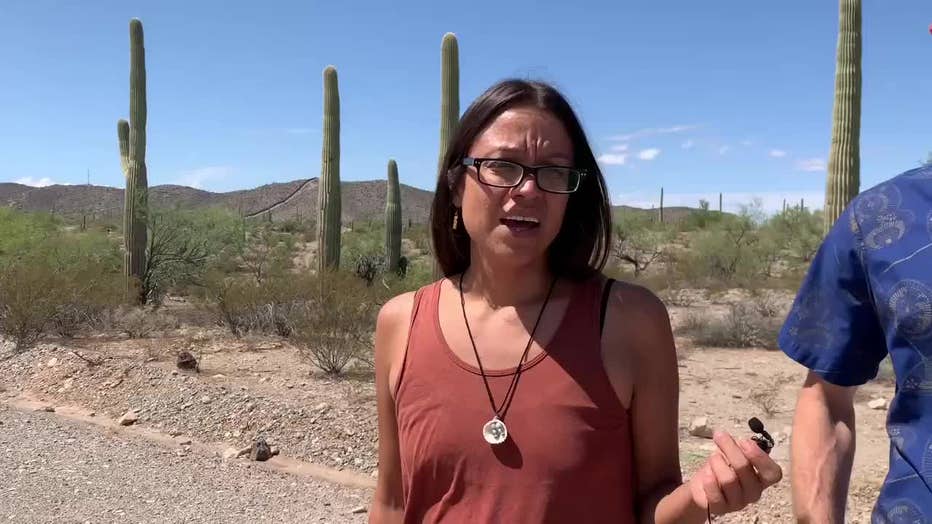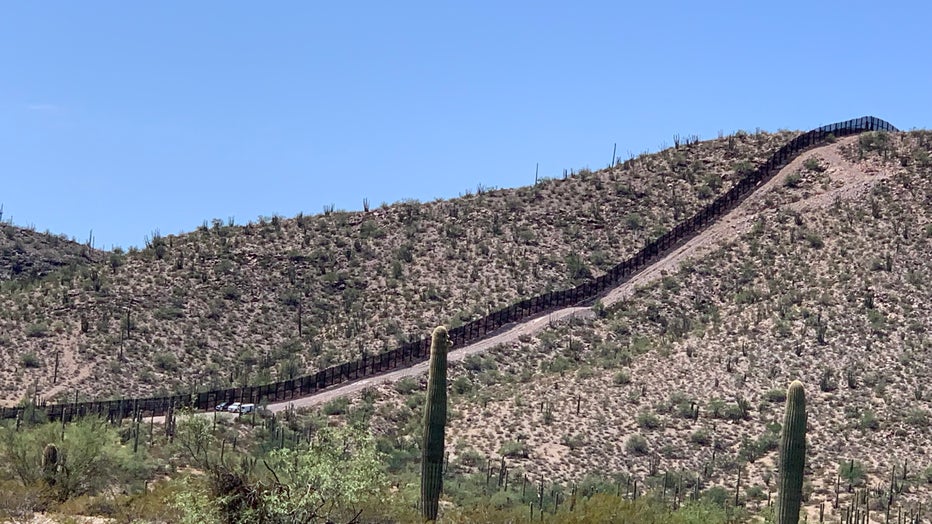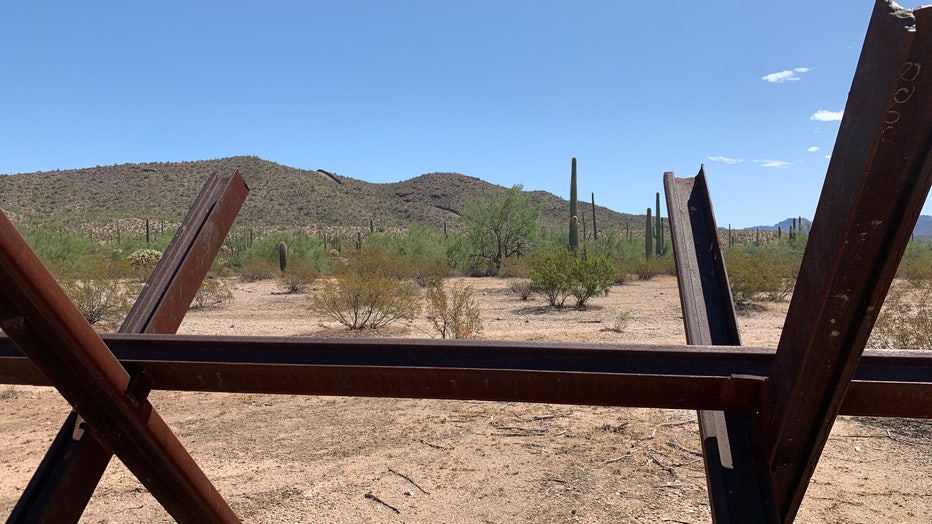Border wall could destroy natural wildlife refuge in southern Arizona, environmentalist says
ORGAN PIPE CACTUS NATIONAL MONUMENT — There are four endangered species found in Organ Pipe Cactus National Monument, a 500-mile federal natural reserve in southwest Arizona, which is marked by 200-year-old majestic saguaro cacti.
This part of the Sonoran desert is vast and desolate and it is a recharge zone where the National Park Service is trying to promote the growth of endangered or near-endangered species.
But Dan Millis of the Sierra Club’s Borderlands Project says that if a 32-mile, 30-foot border wall is built here it could damage this area, which is named after the organ pipe cactus.
The Sierra Club along with the American Civil Liberties Union (ACLU) and Southern Border Communities Coalition (SBCC)’s filed a lawsuit challenging President Donald Trump’s emergency declaration to build parts of the wall through the Arizona and California border, including here at Organ Pipe Cactus National Monument.
In July, five of the nine U.S. Supreme Court justices said the Sierra Club and other organizations did not have a legal right to sue. An appeal on a motion is still pending, but as the construction of a border wall has already begun near Lukeville, Arizona, just miles from this reserve, Millis is worried that soon construction also will start at this park.
“It’s easiest to build where you already built. They already have the access roads. They already have the staging areas. And they already own the land because this is a national monument,” Millis said on Tuesday as he gave Border Report a tour of the refuge.
President Donald Trump recently called a newly constructed section of the U.S.-Mexico border wall in San Diego “a world-class security system.” His administration has said that the purpose of the wall that’s supposed to cross through Texas, Arizona and California with additional technology is aimed at preventing illegal crossings along the border.
In February 2019, a federal appeals court ruled that the Trump Administration was okay to waive environmental rules to speed up construction of the U.S.-Mexico Border Wall.
A spokesperson for the Justice Department, Steven Stafford, told The Hill in a statement that “the court has affirmed that authority, and that is a victory for the Trump administration, for the rule of law, and above all, for our border security,”
According to a report by the National Geographic, it isn’t required that the construction of the border wall meets more than 30 of the biggest federal environmental oversight laws because of what was passed under the REAL ID Act. The federal government is able to cite national security as a reason to waive any laws.
National Geographic reports that these laws include the Endangered Species Act, the Clean Air Act, the Clean Water Act and the National Environmental Policy Act.
These four species of plants and animals that live at Organ Pipe Cactus National Monument are endangered:
“That bat is going to be disoriented by these daytime-bright 30 miles long lights,” Millis said.
A popular campground on the park, known for its “deep, dark starry nights” with campers and hikers, may also be affected by the glow of floodlights, Millis said.
A recent Washington Post article reported that a July 2019 internal National Park Service report warns that there are up to 22 archaeological sites that “likely will be wholly or partially destroyed by forthcoming border fence construction” at Organ Pipe Cactus National Monument. These lands are also the ancestral lands of the Tohono O’odham people.
A new brochure that is given by the National Park Service at the visitor’s center at Organ Pipe says: “The fruits of saguaro and organ pipe cactus provided food during the hot Sonoran summer” for these people.
Nellie Jo David, a member of the tribe, says these are her family’s ancestral lands and she worries if a border wall is built that the burial remains of her people will be disturbed, uprooted and desecrated.
Read a previous Border Report story and video of Nellie Jo David on building a wall at the park.

Nellie Jo David of the Tohono O’odham people says a border wall will desecrate her tribe’s ancestral remains. She visited Organ Pipe Cactus National Monument on Tuesday, Sept. 24, 2019. (Border Report Photo/Sandra Sanchez)
Construction plans call for a 30-foot-tall steel bollard fence built where an earlier, shorter wall was put in 2008. The new wall will have an underground concrete and steel foundation eight to 10-feet deep, according to the article, which was written by submitting Freedom of Information Act for specific details.

An 18-foot-high wall was built in Organ Pipe Cactus National Monument in 2007 on the border between the park, located in southwestern Arizona, and Sonoyta, Mexico. A 30-foot tall steel wall is to be built at that same location as part of the Trump Ad
And the new wall is to be built exactly where the current wall is.
Millis claims the construction of a road next to the current wall is contributing to flooding at Organ Pipe Cactus National Monument. On a ridge called Monument Rise, where the current wall goes up and over, Millis believes debris and silt are getting clogged in the slats of the wall when it rains and that causes a gully wash that flows downhill, injuring plants and animals.

Metal barricades were put up at Organ Pipe Cactus National Monument to protect the soil where cactus and endangered plants and species live. (Border Report Photo/Sandra Sanchez).
Sandra Sanchez can be reached at SSanchez@BorderReport.com. She is part of a team traveling the Southwest border and reporting stories from San Diego to Brownsville, Texas.
Visit the BorderReport.com homepage for the latest exclusive stories and breaking news about issues along the United States-Mexico border.

